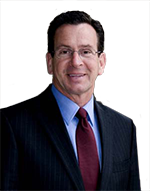Press Releases

04/12/2018
Gov. Malloy Announces Closure of Connecticut Juvenile Training School
Fulfills Goal to Close Outdated Facility by 2018
(HARTFORD, CT) – Governor Dannel P. Malloy announced that effective today, the Connecticut Juvenile Training School (CJTS), a state facility for boys adjudicated as “delinquent” and committed to the Department of Children and Families (DCF), has closed. The number of youths housed at CJTS has dropped precipitously due to a declining rate of juvenile and young adult arrests, record low crime rate, the impact of the Governor’s criminal justice reforms, and the enhanced behavioral health services made available by DCF to all of Connecticut’s youth. The facility stopped taking new admissions on January 1, and the last youth left the facility today.
CJTS originally opened in 2001 under Governor John G. Rowland, costing $57 million in taxpayer money to build and millions more in annual costs to operate.
“In Connecticut, we’re leading the nation in rethinking our approach to criminal justice, especially when it comes to the treatment of our young people,” Governor Malloy said. “The Connecticut Juvenile Training School was an ill-advised and costly relic of the Rowland era. It placed young boys in a prison-like facility, making rehabilitation, healing, and growth more challenging. The fact remains that this isn’t a celebratory moment, but a time to reflect on the past mistakes made when it comes to juvenile justice, and an opportunity to create a system that better serves our young people and society as a whole.”
CJTS is located on 32 acres of land in Middletown. The facility is secure and has a campus-style design with six buildings surrounding a central courtyard. It provided services to males between the ages of 12 to 20, and was originally built with the capacity to house more than 200 youths.
As part of the budget deal reached in October 2017, lawmakers voted to transfer care of youths whom the courts previously committed to DCF over to the judicial branch by July 1, 2018.
“We thank the staff of CJTS who were devoted to rehabilitating these young people and to improving their lifelong outcomes,” Governor Malloy continued. “But the fact is, they didn’t need a prison-like facility that housed over 200 youths to accomplish this important work. As a state, we must endeavor to provide a more suitable setting for this critical work.”
“The staff at the facility have worked tremendously hard to serve this population of youth, have demonstrated great commitment and compassion, and have proven themselves to be dedicated public servants,” DCF Commissioner Joette Katz said. “We wish them all the best in their new endeavors, and I thank them for being so instrumental in reforming the Connecticut juvenile justice system.”
“The way Governor Malloy and Connecticut policy makers have methodically reformed their juvenile justice system to the point where they are now closing their state’s last youth prison is nothing short of a national model,” Vincent Schiraldi, co-director of the Columbia University Justice Lab and former New York City Probation Commissioner, said. “The fact that Connecticut’s juvenile arrest rate has plummeted alongside its decline in youth imprisonment means that state policy makers have figured out a way to make Connecticut residents safer while incarcerating fewer of their sons and daughters, something policy makers in other states should pay attention to.”
Governor Malloy has implemented criminal justice reforms that have been instrumental in drastically reducing the rate of youth arrest and imprisonment, while simultaneously overseeing a historic drop in crime. During the last 10-years, the number of youth entering the criminal justice system has plummeted in the state. Between 2009 and 2016 – the most recent year for which data is available – arrests involving people under the age of 18 dropped by a dramatic 56 percent. Additionally, between 2009 and 2017, the number of inmates under the age of 18 incarcerated by the Connecticut Department of Correction dropped by almost 85 percent.
**Download: Fact sheet and statistics on the Connecticut Juvenile Training School and juvenile crime in Connecticut
- Twitter: @GovMalloyOffice
- Facebook: Office of Governor Dannel P. Malloy


